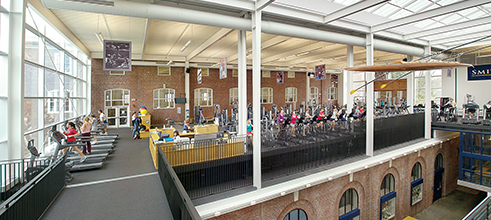Document Type
Article
Publication Date
1-1-2023
Publication Title
Frontiers in Neuroergonomics
Abstract
Introduction: Each individual touches the own body several 100 times a day. While some researchers propose a self-regulatory function of self-touch, others report that self-touching increases nervousness. This controversy appears to be caused by the fact that researchers did not define the kind of self-touch they examined and actually, referred to different types of self-touch. Thus, kinematically defining different types of self-touch, such as phasic (discrete), repetitive, and irregular, and exploring the neural correlates of the different types will provide insight into the neuropsychological function of self-touching behavior. Methods: To this aim, we assessed hemodynamic responses in prefrontal brain areas using functional near-infrared spectroscopy (fNIRS) and behavioral responses with NEUROGES®. Fifty-two participants were recorded during three specific kinematically types of self-touch (phasic, irregular, repetitive) that were to be performed on command. The recently developed toolbox Satori was used for the visualization of neuronal processes. Results: Behaviorally, the participants did not perform irregular self-touch reliably. Neurally, the comparison of phasic, irregular and repetitive self-touch revealed different activation patterns. Repetitive self-touch is associated with stronger hemodynamic responses in the left Orbitofrontal Cortex and the Dorsolateral Prefrontal Cortex than phasic self-touch. Discussion: These brain areas have been reported to be associated with self-regulatory processes. Furthermore, irregular self-touch appears to be primarily generated by implicit neural control. Thus, by distinguishing kinematically different types of self-touch, our findings shed light on the controverse discussion on the neuropsychological function of self-touch.
Keywords
functional near-infrared spectroscopy, left dorsolateral prefrontal cortex, left orbitofrontal cortex, prefrontal activity, self-touch
Volume
4
DOI
10.3389/fnrgo.2023.1266439
Creative Commons License

This work is licensed under a Creative Commons Attribution 4.0 International License.
Rights
© 2023 von Au, Helmich, Kieffer and Lausberg
Version
Version of Record
Recommended Citation
von Au, Sabrina; Helmich, Ingo; Kieffer, Simon; and Lausberg, Hedda, "Phasic and Repetitive Self-Touch Differ in Hemodynamic Response in the Prefrontal Cortex–An fNIRS Study" (2023). Exercise and Sport Studies: Faculty Publications, Smith College, Northampton, MA.
https://scholarworks.smith.edu/ess_facpubs/58


